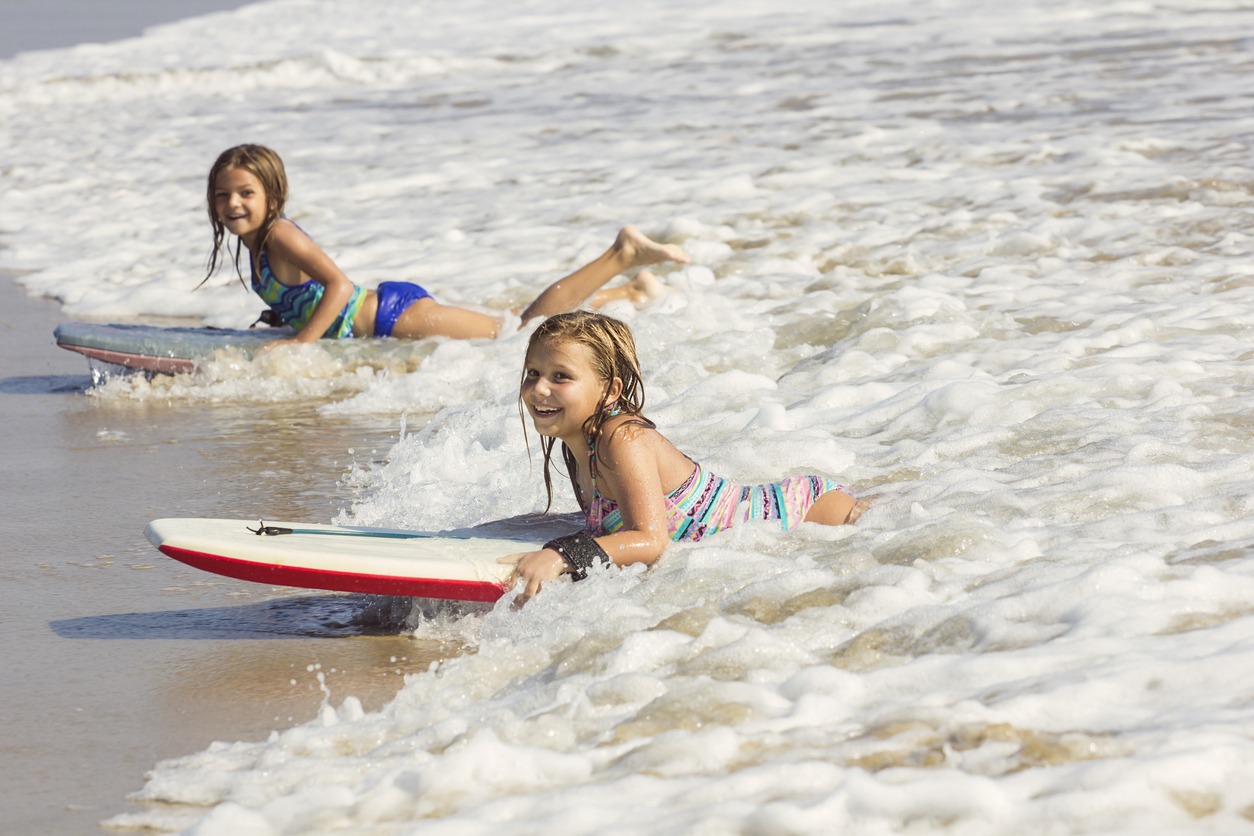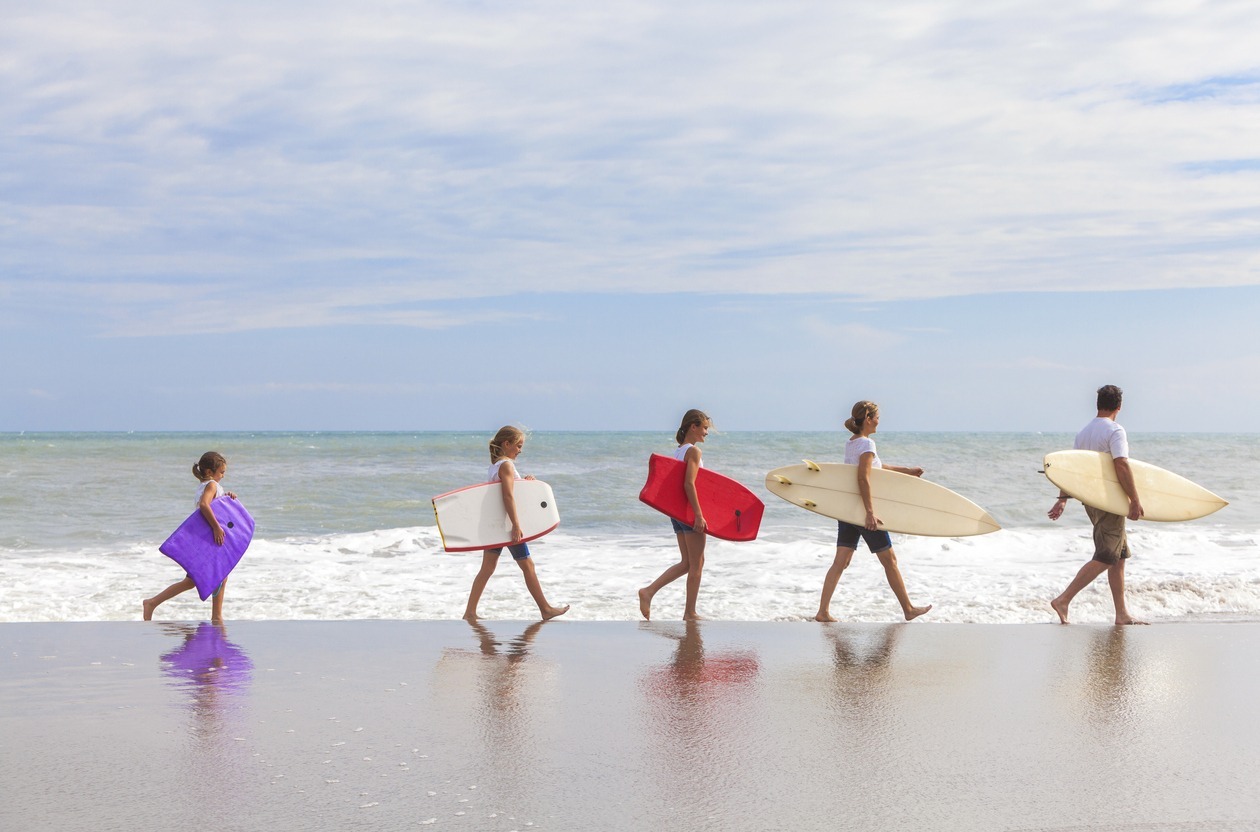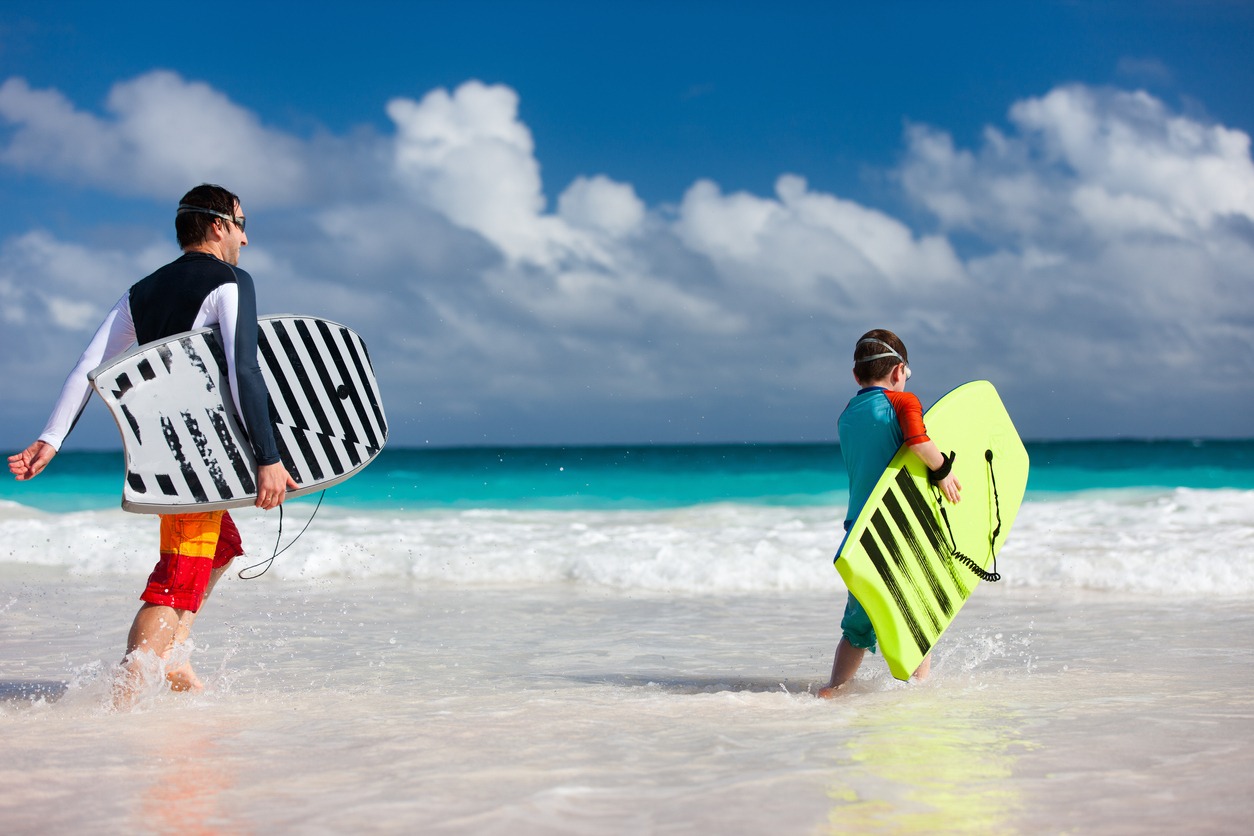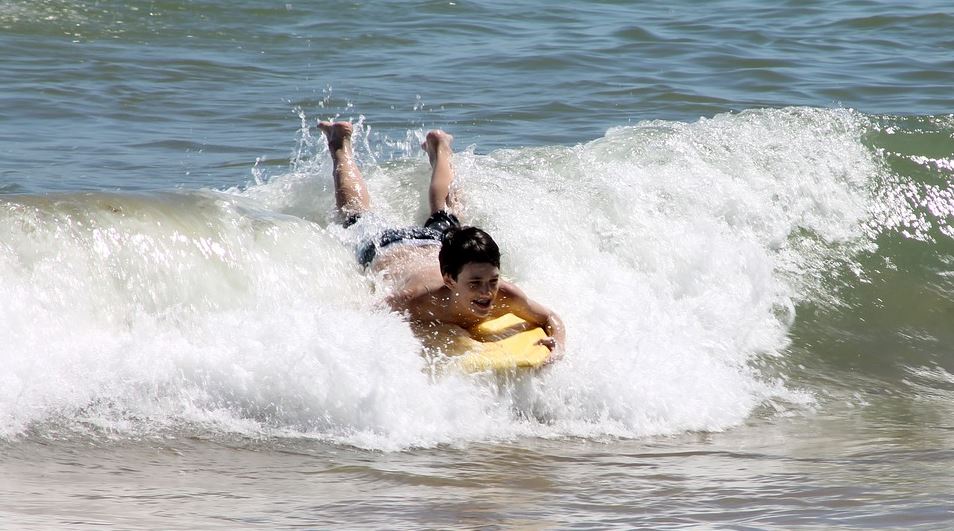It’s almost time for boogie board season! That means it’s time to ditch the indoor gymnastics mats in favor of the extremely fun foam boards designed for summer. Pack your beach bag with all of your beach toys, and don’t forget to bring your kids’ bodyboards because there’s nothing more fun in the summer than boogie boarding.
Use this buying guide if you’re not sure which beginner bodyboards are best for your children.
How to Purchase a Body Board for Children
Bodyboards, also known as boogie boards, allow people of all ages to ride waves while lying on their bellies on the board. Choose a bodyboard for your kid based on their size, whether you buy or rent one. This can help ensure your child’s safety while bodyboarding and make for maximum performance.
Find a bodyboard that piques your child’s interest. Bodyboards are available in various themes and colors, including cartoon characters and sports teams. Look for bodyboards and bodyboard accessories at a sporting goods store, surf shop, or novelty store on the beach.
Placing a bodyboard in front of your youngster is a good idea. Position the board’s bottom on the ground. The bodyboard should be an inch or so above your kid’s naval. This length enables your child to catch waves easily.
Too-large boards can be tough to hold. Bodyboards that are too small for your child may cause them to sink. Allow two inches above the belly button for growing space for rapidly growing teens.
Search for sizing charts, particularly if your child is not present when purchasing a bodyboard. A 38-inch board is suitable for people up to 5 feet 4 inches tall and weighing 65 to 85 pounds. A 40-inch bodyboard is highly suggested for people who are 5 feet 5 inches to 5 feet 7 inches tall and weigh 110 to 130 pounds.
There are youth-size boards suitable for children weighing less than 65 pounds. For reference, see the bodyboard sizing chart below!
Children’s Bodyboard Size Chart
The child’s weight and height determine the size of the boogie board, so be sure to measure them before purchasing a boogie board. This will assist you in picking the best size for your child. A sizing chart is provided below to help you select the best board for your child.
| Boogie board size (inches) | Weight (lbs) | Height (inches) |
|---|---|---|
| Below 30 in | 30 – 45 lbs | 20 – 40 in |
| 30 in | 45 – 55 lbs | 40 – 50 in |
| 32 in | 45 – 65 lbs | 45 – 55 in |
| 34 in | 55 – 75 lbs | 45 – 60 in |
| 36 in | 65 – 100 lbs | 50 – 60 in |
| 38 in | 75 – 130 lbs | 55 – 60 in |
| 40 in | 90 – 160 lbs | 60 – 65 in |
| 40.5 in | 110 – 175 lbs | 60 – 65 in |
| 41 in | 120 – 185 lbs | 65 – 70 in |
| 41.5 in | 130 – 200 lbs | 65 – 70 in |
| 42 in | 145 – 210 lbs | 65 – 70 in |
| 42.5 in | 155 – 220 lbs | 65 – 70 in |
| 43 in | 155 – 230 lbs | 70 – 75 in |
| 43.5 in | 165 – 285 lbs | 70 – 75 in |
| 44 in | 165 – 285 lbs | 70 – 75 in |
| 44.5 in | 175 – 300 lbs | 70 – 75 in |
| 45 in | 175 – 300 lbs | 75 – 80 in |
| 46 in | 185 – 320 lbs | 80 – 85 in |
Both adults and children can use the table above as a guide. Those figures are only recommendations; it is up to the bodyboarder to pick the most comfortable size for them.
Riding a Bodyboard with Children
Learning to ride a bodyboard does not require a lot of skill and is fairly simple. Shallow water with modest waves is ideal for boogie boarding practice. The following are some steps you can take to learn how to boogie board.
Choose a Location
If you’re practicing with a child, it’s best to begin in calm water with few waves. It is also critical to assess whether the waves are age-appropriate for the child. Choose a not overly crowded location free of stones and other impediments.
Wear Protective Equipment
Using the proper bodyboarding equipment makes you more secure and comfortable in the water. Swimming clothing such as a wetsuit, rash guard, swimming trunks, dry suit, and swimming suit can keep you warm and dry.
Utilize Safety Features
Most bodyboards arrive with a leash that can be attached to your wrist. Leashes allow you to stay attached to your bodyboard at all times.
Obtain a Position
It is best to confront the white water straight on when entering the desired water level. Pursuing the white water diagonally or sideways is more tiring and can cause your boogie board to overturn. After reaching your preferred water depth, turn your board toward the shore and lie down on it.
Seize the Wave
When a wave comes in, hold the top of your board with both hands while lying on it and begin to kick and paddle back to shore. When kicking, make sure to paddle with both hands and keep your feet underwater.
Returning to the Beach
To direct your bodyboard, point your board’s nose towards the beach. If the water is still deep enough, continue to paddle and kick. To practice boogie boarding, repeat the process. If your child is confident enough, you might like to catch more difficult waves.
How to Teach Your Child to Board a Bodyboard
Even if you don’t bodyboard yourself, teaching kids to boogie board is simple. It is preferable to get a larger board for your child to have more buoyancy. Here are some pointers to help you train your child for boogie boarding.
Safety First
Before you begin bodyboarding, attach the wristband to your child’s wrist, so they don’t fall off their board. Begin boogie boarding in a common location with small, predictable waves.
Swim Lessons
Anyone interested in board water sports should be able to swim. Swimming is a valuable life skill that can enhance your bodyboarding experience. Before catching bigger waves, ensure that the child is a good swimmer.
Choose a Location
For beginners, it is best to begin boogie boarding in shallow water with modest waves. When boogie boarding, be especially mindful of rocks and other obstacles.
Be Patient
While some children are fearless and confident in the water, others find it uncomfortable and threatening. Assess your child’s abilities, and don’t rush their progress. In some cases, you might like to slow down your teaching pace.
Make It Fun
Place your child in the path of an incoming wave. Stay behind your child’s boogie board and push when a wave arrives. This will make it easier for your kid to boogie board, and they will organically learn to paddle when a wave comes.
Request Feedback
Understanding how your children feel while boogie boarding and in the water is critical. When bodyboarding, always ask if there are any fears, discomfort, or questions. This will give them more confidence and will clear up any confusion.




